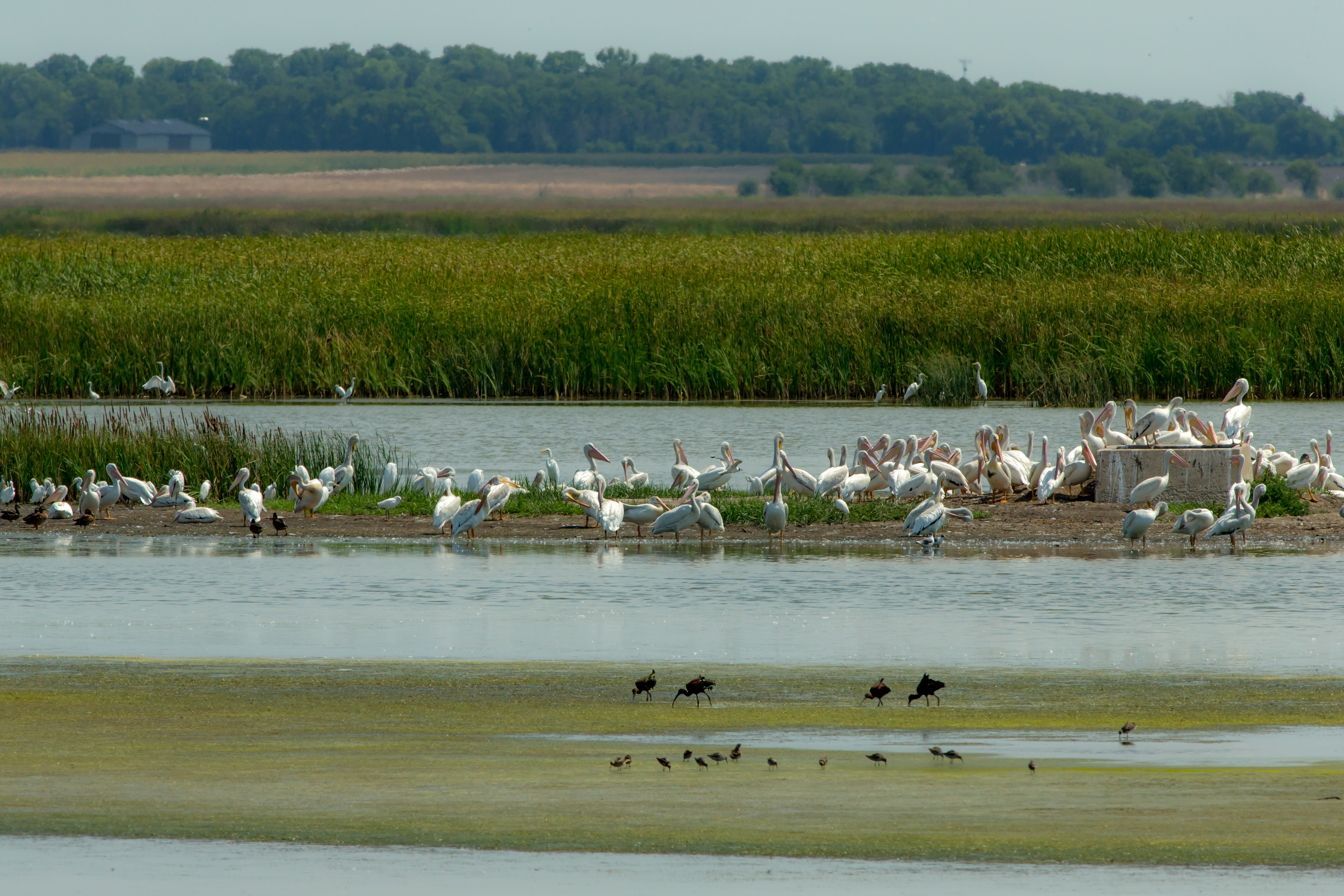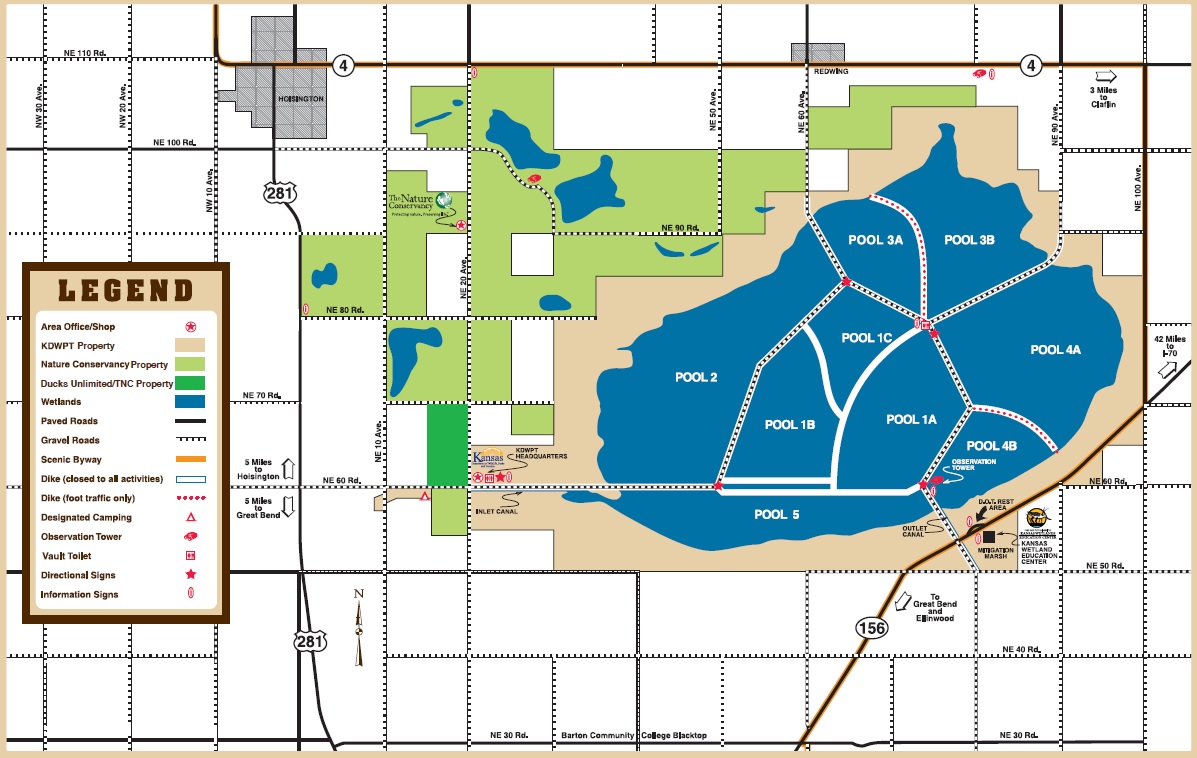The Convention on Wetlands of International Importance, called the Ramsar Convention, is an intergovernmental treaty that provides the framework for national action and international cooperation for the conservation and wise use of wetlands and their resources. In 1971, representatives from 18 nations convened in Ramsar, Iran to encourage the conservation and wise use of all wetlands through local and national actions and international cooperation, as a contribution towards achieving sustainable development throughout the world. It is the only global environmental treaty that deals with a particular ecosystem and covers all geographic regions of the planet. The United States presently has 38 sites designated as Wetlands of International Importance, including Cheyenne Bottoms and Quivira NWR. These two sites in Kansas, because of this sharing of habitat, often host a significant percentage of the shorebirds in the Central Flyway.
Cheyenne Bottoms
Cheyenne Bottoms is a globally important stopover for thousands of migratory shorebirds and waterfowl; the site also supports other threatened or endangered birds during nesting, staging or wintering periods. Cheyenne Bottoms is one of the top migratory shorebird staging areas in the United States, with 10 species of shorebirds having a significant percentage of their populations stopping at Cheyenne Bottoms in a given year. Cheyenne Bottoms is a Western Hemispheric Shorebird Reserve Network site of hemispheric importance to shorebirds. The site also provides important staging and nesting areas for waterfowl species including Mallards and Blue-winged Teal. Cheyenne Bottoms is made up of KS Department of Wildlife, Parks, and Tourism’s Cheyenne Bottoms Wildlife Area (19,857 acres) and The Nature Conservancy’s Cheyenne Bottoms Preserve (7,848 acres). Open to the public, it is an important area for conservation education, recreation and scientific research.


Quivira National Wildlife Refuge
Quivira represents an excellent example of an inland salt marsh, a rare habitat type in the USA’s midwestern region, ranging from high salinity to almost fresh water depending upon varying precipitation and saline inflow from Rattlesnake Creek, resulting from local geological conditions which bring a layer of salty groundwater close to the surface upstream. The salt marshes, interspersed with mixed grass prairie and agricultural fields, provide critical nesting, migration, and wintering habitat for more than 311 bird species and thousands of individuals. A number of nationally endangered and threatened species are present, including the Bald Eagle, Peregrine Falcon, Whooping Crane, Least Tern, and Piping Plover. A diversity of habitat is provided by native grass uplands, fresh and saltwater marshes, and salt flats, and the site comprises a major site for migratory birds – because of the sporadic nature of prairie thunderstorms, Quivira complements the nearby Cheyenne Bottoms Ramsar site, such that when one is dry or flooded the other is often suitable for use by shorebirds. A large and growing number of tourists enjoy wildlife observation at the site and the Friends of Quivira volunteer support group organizes many imaginative activities. Quivira NWR is managed by the U.S. Fish & Wildlife Service in the National Wildlife Refuge System.
World Wetlands Day
February 2nd marks the date of the adoption of the Convention on Wetlands in 1971, in the Iranian city of Ramsar on the shores of the Caspian Sea. Each year since 1997, government agencies, non-governmental organizations, and groups of citizens at all levels of the community have taken advantage of the opportunity to undertake actions aimed at raising public awareness of wetland values and benefits in general, and the Ramsar Convention in particular.
For more information visit: https://www.worldwetlandsday.org/